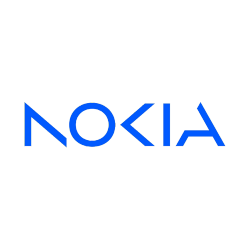BlackBerry Z20 Comprehensive Review of Specs Prices Pros & Cons

Introduction to BlackBerry Z20
Building off its legacy of smartphones designed with productivity in mind, BlackBerry had plans to release another intriguing device, the BlackBerry Z20. Although it was ultimately cancelled, this model was intended to be a new addition to the BlackBerry lineup, designed to cater to both professionals and everyday users with its balance of features.
Design and Build
The BlackBerry Z20 was designed to fit comfortably in the hand with dimensions noted at 9.5 mm in thickness. While specific details about its weight were not disclosed, it was expected to have a robust and ergonomic design typical of BlackBerry devices. The phone was supposed to be available in classic colors, Black and White, appealing to those who prefer minimalism and professionalism in their technology.
Display
Planned to sport a 5.0-inch IPS LCD display, the Z20 would offer a resolution of 720 x 1280 pixels, providing approximately 294 ppi density. This resolution was intended to deliver clear and crisp visuals, suitable for media consumption and everyday tasks, making it a competent device for both personal and professional use.
Performance
Under the hood, the BlackBerry Z20 was set to be powered by the Qualcomm MSM8960 Snapdragon S4 Plus chipset with a Dual-core 1.5 GHz Krait CPU. This processing power, coupled with the Adreno 225 GPU, implied that the Z20 would have the capabilities to handle multitasking and graphical applications with relative ease.
Memory and Storage
In terms of memory, the Z20 was to be equipped with 2GB of RAM and 16GB of internal storage. For users who required more space for apps and media, the device was purported to support microSDHC cards in a dedicated slot, ensuring flexibility in managing storage needs.
Camera Features
The BlackBerry Z20 was expected to include an 8 MP rear camera with autofocus and an LED flash, suitable for capturing moments in moderate detail. On the front, a 2 MP camera would serve for selfies and video calls. Video recording capabilities were anticipated to be up to 1080p at 30 frames per second, making it competent for standard video capture.
Battery Life
A Li-Ion 2800 mAh non-removable battery was to power the Z20. While specific battery life estimations were not detailed, this capacity typically allows for full-day usage under regular conditions, aided by the efficiency of the BlackBerry OS 10.3.
Network and Connectivity
The Z20 was designed to support GSM, HSPA, and LTE technologies, making it versatile across various network generations. It was to sport connectivity features like Wi-Fi 802.11 a/b/g/n, Bluetooth 4.0, GPS, and an FM radio, catering to a broad suite of connectivity needs. USB connectivity via microUSB 2.0 was also included.
Operating System
The BlackBerry OS 10.3 was expected to come pre-installed on the Z20, bringing with it improvements in interface functionality and integration with BlackBerry services. This operating system promised robust support for productivity applications, further underscoring BlackBerry’s commitment to its professional user base.
Conclusion
Though the BlackBerry Z20 did not make it to the market, its anticipated specifications suggested a balanced device suitable for both personal and professional use. It was set to bring BlackBerry’s signature focus on productivity, wrapped in a user-friendly package. For those who hold nostalgia for BlackBerry devices, the Z20 remains an interesting 'what might have been' in the evolution of smartphones.
Key Features of BlackBerry Z20
- Supports GSM / HSPA / LTE network technologies.
- Sleek design with a thickness of only 9.5 mm.
- 5.0-inch IPS LCD display with a resolution of 720 x 1280 pixels.
- Powered by BlackBerry OS 10.3 for enhanced performance.
- Runs on Qualcomm MSM8960 Snapdragon S4 Plus chipset with a dual-core 1.5 GHz Krait CPU.
- Expandable storage via microSDHC card slot.
- 16GB internal storage paired with 2GB RAM.
- 8 MP main camera with autofocus and LED flash, supports 1080p video recording at 30fps.
- 2 MP front-facing camera for selfies.
- Includes a 3.5mm headphone jack and FM radio.
- Wi-Fi 802.11 a/b/g/n with dual-band support, DLNA, and hotspot functionality.
- Bluetooth 4.0 for wireless connectivity.
- Equipped with GPS for accurate positioning.
- Non-removable Li-Ion 2800 mAh battery for long-lasting use.
- Available in two classic colors: Black and White.
BlackBerry Z20 Cons
- Status: The device was never made available as it was cancelled.
- Weight: The weight of the device is unspecified which may cause uncertainty about its portability.
- Processor: Uses outdated Qualcomm MSM8960 Snapdragon S4 Plus with Dual-core 1.5 GHz Krait CPU.
- Display: The screen-to-body ratio is relatively low at ~67.6%.
- NFC: Lack of NFC support, which could limit connectivity options.
- Battery: Non-removable 2800 mAh battery, which might be inconvenient for users needing to replace the battery.
- Operating System: Runs on BlackBerry OS 10.3, which is not as widely supported as other OS like Android or iOS.
- Front Camera: Only 2 MP for the selfie camera, providing lower quality photos.
View Also
More Phones
All Rights Reserved +14266 Phones © Mobilawy 2025

























